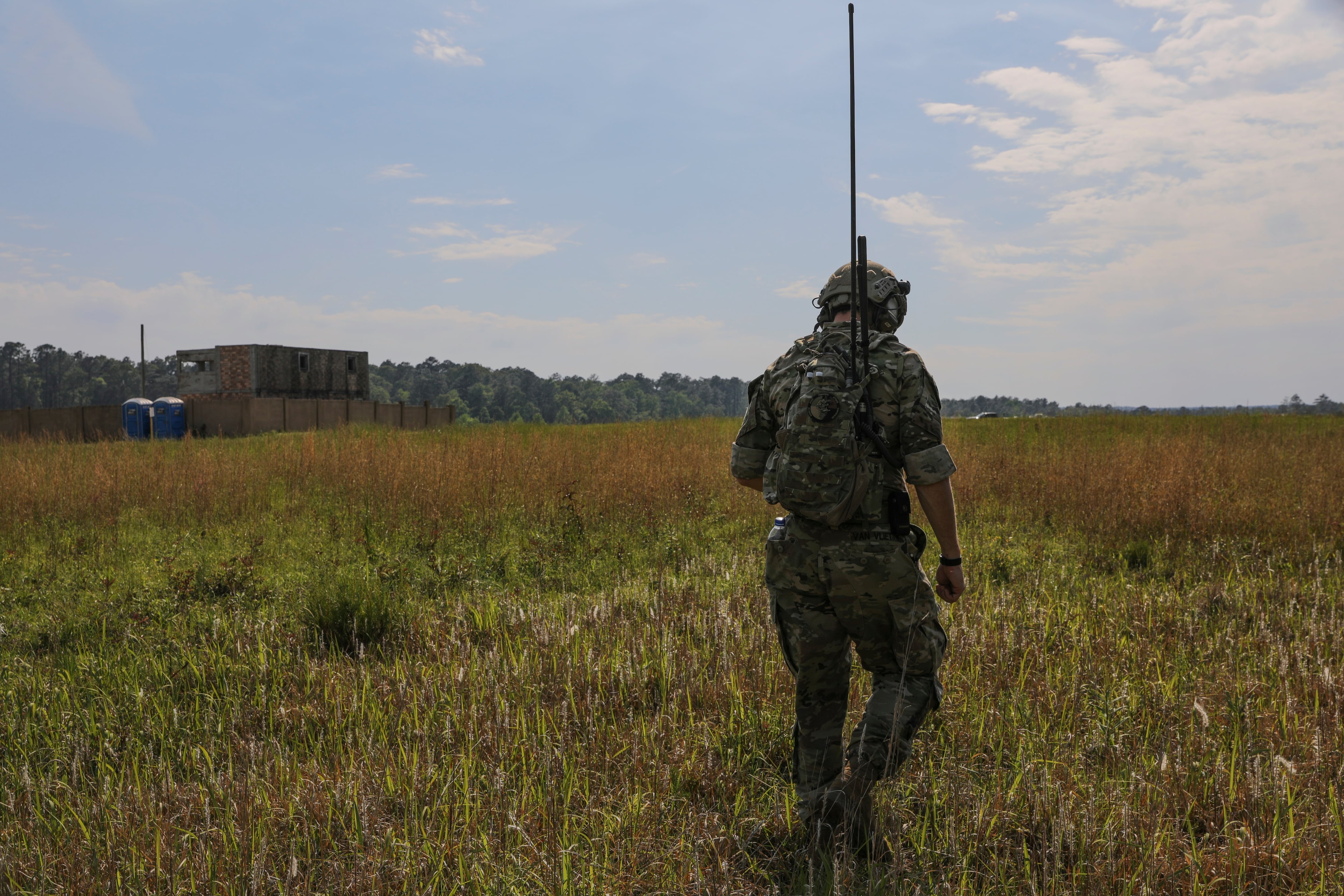As the importance of Navy submarines, underwater drones and sensors grows, so does the challenge of maintaining fast, reliable radio communication links.
Water isn't particularly friendly to radio signals. Transmissions made at the frequencies most often used for terrestrial, air and space communications tend to fade out after just a few feet underwater. For added range, the Navy has long resorted to transmitting signals in the very low frequency and extremely low frequency portions of the electromagnetic spectrum. The trade-offs, however, are formidable, including the need for massive land antennas and agonizingly slow data transfer rates, often on par with 1990s-era dial-up modems.
At extreme depths, reliable radio communication becomes impossible. That's why underwater robotic vehicles sent to investigate deep-sea shipwrecks and landscapes are usually equipped with a spool of heavy and expensive fiber optic cable linked to a surface vessel.
Yet, help for communication-starved underwater vessels and sensors may finally be on the way. State University of New York at Buffalo (SUNY-Buffalo) researchers are currently working to help underwater transmissions at least partially catch up with rapidly increasing over-the-air data transmission rates.
"The incredible innovation and expansion that we have seen over the past several decades in terrestrial wireless communication has not yet arrived in underwater connections, but we are now beginning to change that," said Dimitris Pados, a professor of electrical engineering in SUNY-Buffalo's School of Engineering and Applied Sciences.
Fresh approaches
Motivated by recent advances in signal-processing theory and practice, as well as the development of software programmable transceiver platforms, Pados and several co-researchers are developing new types of hardware- and software-based communication technologies, including waterproof modems and open-architecture protocols designed to address underwater transmission speed issues.
The research project began in late 2011 with support from the National Science Foundation and a partnership with Teledyne Benthos, a marine communication technology provider headquartered in North Falmouth, Massachusetts.
Pados and his team are currently focused on combining a software-defined radio with underwater acoustic modems. A prototype underwater communication system developed by the researchers is based on a cognitively self-optimized technology that works by jointly adapting link signal waveforms and network session routes to maximize network throughput and spectral efficiency under a wide range of operating conditions
Pados noted that the technology is based on a well-understood signal processing theory. "An elementary pulse signal is selected and shaped to occupy all [of the] hardware-accessible frequency bandwidth," he explained.
A finite number of different sign/phase shifted repeats of this pulse forms the final waveform design, which then carries the information symbols on its back. "The specific values of the sign/phase shift sequence — that we will call waveform-carrier code — are determined in near-real-time by principal-component signal analysis techniques that calculate the code with highest interference avoidance properties at any given time and receive node location," Pados said.
"We are designing our physical waveforms — signals — so that we can occupy a broader spectrum of frequencies and the waveform will have such a shape that we take advantage of any opportunities, any openings, that you might see in the spectrum to get more stuff across," Pados said. "So it's not frequency hopping ... it's really closer to spread spectrum communications."
In May 2015, at Lake LaSalle on the SUNY-Buffalo campus, the research team demonstrated its technology for the first time, achieving communication at 200 kilobits per second across an underwater distance of 200 meters (or about 656 feet). The system consisted of two Ettus Research USRP N210 SDN modules using Teledyne RESON TC4013 transducers with a 1Hz -170kHz operational frequency range. Further tests were later conducted on nearby Lake Erie to test modulation techniques.
Back in the '90s
Pados said further research will likely help the technology achieve even faster throughput speeds, eventually making it the basis for a wide range of underwater communication applications. Beyond submarines and underwater drones, Pados sees the technology eventually being used in port surveillance, wireless diver-to-diver communication, and wireless diver-to-underwater vehicle communication applications.
"Right now, we are in the mid-1990s in terms of kilobits per second being transmitted underwater," he said. "The technology we are currently developing takes it the next step up."
The research team is still far from transmitting data at gigabits-per-second rates. "But the demonstrations that we've made show that we can do as well as maybe 200 kilobits per second, or 300 kilobits per second, over tested [underwater] distances of … right now about 300 meters," he said. Pados is hopeful that the team will eventually be able to reach data rates that support at least medium-quality underwater video links.
Data rates in excess of 300 Kbps will also be needed to support communication in complex underwater environments. "As soon as the scope of the operation increases, and you maybe have 10 vehicles operating underwater simultaneously, and you want them to be networked, then really you have a situation where even without video you will surely need the data rates that we're discussing," Pados said.
While Pados believes that even longer underwater distances are likely achievable, true long-distance underwater communication links may never become possible. "Water basically absorbs energy so rapidly that it's very difficult to get your signal across over long distances," he said. "I think, however, that 500 meters is something we could probably demonstrate."
Pados said military interest in the technology is high and that the research team has been working closely with several Department of Defense agencies. "We have been advising, basically, DARPA agents in terms of existing problems and challenges that we face in the context of underwater communications," he said. "We also have a collaboration with the Air Force and Navy laboratories."








